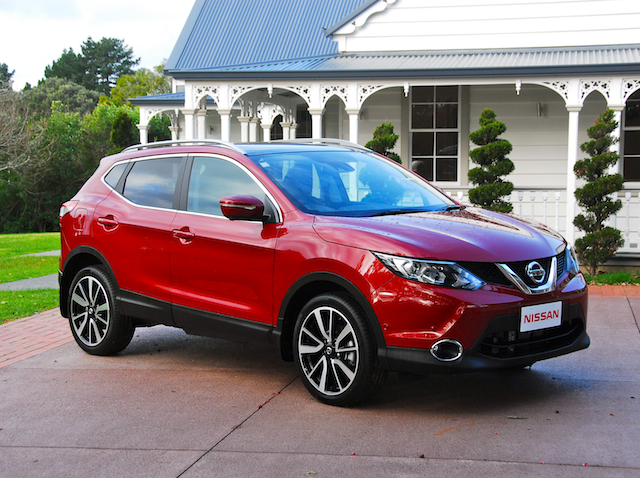
Nissan NZ managing director John Manley reckons this year’s strong new-vehicle market has at last caught up with the country’s population growth.

“It’s like the mid-1970s market, it’s up to where it needs to be,” he said. “Over a 40-year period the population of New Zealand has steadily grown, but new car sales have gone backwards. Now we are seeing growth where we could have a record year of 125,000 sales in 2014. The strong market will continue, too.”
Back in 1975 the NZ population was 3.15 million, when new-vehicle sales were around 80,000 vehicles. In 1984 it was 3.3 million and sales were up above 123,000. Last year the population was 4.47 million and sales finished at 113,700 vehicles. This week it’s listed at 4.54 million (adding one person every 8min 11sec, say the stats people) and sales are headed towards a 30-year record.
Being part of such a milestone would suit Manley just fine, considering he has a vehicle in every division of the strongest segment, SUV/crossovers: Juke, Qashqai, X-Trail, Murano, Pathfinder and Patrol.
There is a new one in the compact segment now, the second-generation five-seat Qashqai (cash-kai) on sale from this week. The first-generation model set a number of awards and sales records in its seven-year life cycle. The latest model has been winning even more since it went on sale in Britain and Europe last year.
“If it sells well in Europe, it will sell well in New Zealand,” says Manley. The sales figures back him up: 4600 Qashqais have been sold here since its launch in 2009.

The new Qashqai is a front-wheel drive model based on the X-Trail platform and priced between $35,990 and $42,990. It is slightly longer and wider but not as tall as the outgoing model. Boot space is 430 litres with the seats up and 1585 litres with them down.
It comes in four variants (ST, ST-L, Ti, TS), three using a 106kW/200Nm 2.0-litre direct-injection petrol engine, and the TS a 96kW/320Nm 1.6-litre turbodiesel unit. Each engine is mated to a seven-step continuously variable transmission Nissan calls Xtronic. Braked towing is 1200kg for petrol models, 1400kg for the diesel.
“The Quashqai is one of the original players in what is now a booming part of the New Zealand new-car market,” said Manley. “It represents a huge opportunity for Nissan in New Zealand. For new car buyers, it is the complete package.
“It offers style, safety, technology and premium comfort in an exciting, accessible package that will have broad appeal”.
Qashqai was designed in London under a watchful eye from Japan HQ, engineered in England and Spain, and built at Nissan’s award-winning Sunderland plant in the north of England. Juke is also built in England. X-Trail, Murano and Patrol are built in Japan; Pathfinder is built in Tennessee.
A brief drive in Qashqai on good and bad roads south of Auckland showed up a highly efficient vehicle with a ride/handling mix to rival many more expensive models. Qashqai has a maximum five-star crash safety rating, and its level of equipment – especially the Ti model – falls into the Uncle Tom Cobbley and all category. Qashqai is going to seriously threaten class rivals.
• The strongest sales year in the past 30 years was in 1984 when 123,247 new vehicles were registered. The strongest month since Motor Industry Association records began in 1975 was in July 1984 when 13,983 new models were sold.
That was the month in which NZ faced a constitutional and currency crisis. The NZ dollar was controlled by the Reserve Bank and fixed to the US dollar. The bank believed the NZ was significantly overvalued, but Prime Minister Sir Robert Muldoon refused to devalue it.
He called a snap election in June. Consumers spent up big going into July, believing a David Lange-led Labour Government would devalue. Labour won the July 14 contest, was sworn in on July 26, and immediately devalued. The NZ dollar went from US70c to US44c inside about eight months, or when it was floated in March 1985. It crawled back towards US70c through the mid to late 1990s, but slumped to a record low of around US39c in 2000. Since 2004 the NZ dollar has gone up and down, from a low of US50c during the GFC to recent high of around US88c.

